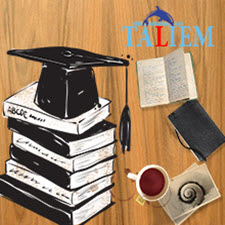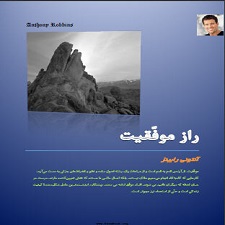توضیحات
چکیده
امروزه ارتباطات کودکان به اتصال با تلویزیون خلاصه شده است و این ارتباط، چالش و مشارکت کودك با تولیدکنندگان رسانه را در حد برقراري تماس تلفنی با برنامه و تولیدکننده ي برنامه محدود کرده است. کودك در این ارتباط نقش دریافت کننده ي اطلاعات را به صورت منفعل برعهده دارد. این دگرگونی در ارتباطات و تبدیل چالش با واقعیت به انتقال اطلاعات تحلیل شده، منجر به بیگانگی کودکان با ارتباطات طبیعیِ و چالش با دنیاي واقعی شده است. مقاله حاضر برگرفته از پژوهش دانشجویی به نام بررسی مقایسه اي تخیل کودك در تعامل با قصه شفاهی و کارتون است. به این منظور تخیل کودك به صورت آزمایشی از طریق بررسی تخیل، آفرینش تخیلی و خیال پردازي آنها مورد مطالعه قرار گرفت. این پژوهش قصد داشت نشان دهد تخیل کودك با دریافت قصه به صورت شفاهی از طریق قصه گو و غیر شفاهی از طریق کارتون چه تغییري می کند؟ بررسی ها نشان داد کودکانی که قصه را به صورت شفاهی و از طریق قصه گو دریافت می کنند از تخیل و آفرینش تخیلی بیشتري نسبت به کودکانی که قصه را از طریق تلویزیون و در قالب کارتون دریافت می کنند برخوردارند.
مقدمه
اکثر پژوهش هاي انجام شده در حوزه کودك و رسانه مربوط به اثرات مخرب برنامه هاي خشونتبار، جنایی و هراسناك بر کودك بوده است. این پژوهشها در صدد بودهاند تا جنبههاي مختلف این اثرگذاري را با توجه به تحقیقات انجام شده بر کودکان تشریحکنند. نتایج محدودي از تحقیقات رسانهاي و ارتباطی به تاثیرات شناختی مکانیزم ارتباطی بر کودك ارائه شده است تحقیقات مختلف با نگاه هاي متعددي رابطه بین تخیل و رسانه را مورد توجه قرار داده اند. پاتریشیا، رز، دورتی، فرار و جسیکا بیگلس، به مقایسه تجربی اثرات رادیو و تلویزیون در تخیل پرداخته اند. واندر، ورت، ا. والکن بورگ، تأثیر تلویزیون بر خیال بافی و تخیل خلاق، را بررسی کرده اند.جسیکا، روس و ایزابل گالیم، تاثیر ویژه رادیو و تلویزیون در درك داستان کودکان را مطالعه کرده اند.
ABSTRACT
Today, children’s communication with television is summarized, limiting the challenge and participation of children with media producers to the extent that they make phone calls to the program and to the program’s producer. The child has a passive role in receiving information in this connection. This transformation in communication and the challenge of turning reality into the transmission of analyzed information has led to the alienation of children by natural communication and the challenge to the real world. This article is taken from a student study called Comparative Study of Child’s Imagination in Interaction with Oral Tales and Cartoons. To this end, children’s imagination was experimentally studied by examining their imagination, imaginative creation and fantasy. This study aimed to show how the child’s imagination changes by receiving the story verbally through the storyteller and non-verbally through the cartoon. Studies have shown that children who receive the story verbally and through the storyteller have more imagination and imagination than children who receive the story through television and in cartoon form.
INTRODUCTION
Most of the research in the field of child and media has focused on the destructive effects of violent, criminal and fearful programs on children. These studies have attempted to explain various aspects of this effect with respect to research on children. The limited results of media and communication research on the cognitive effects of the communication mechanism on children have been presented. Different studies have addressed the relationship between imagination and the media with multiple views. Patricia, Rose, Dorothy, Ferrar and Jessica Biggles have experimentally compared the effects of radio and television on imagination. Wonder, Worth, A. Valken Borg has studied the impact of television on creative imagination and imagination. Jessica, Ross, and Isabel Gallim have studied the special effects of radio and television on children’s story understanding.
Year: 2010
Source : ۰
By : Dr Nasim Majidi, Zahra Shah Shawazi
File Information: persian Language/ 28 Page / size: 437 KB
سال : 1389
منبع : ۰
کاری از : دکتر نسیم مجیدي ,زهرا شاه شوازي
اطلاعات فایل : زبان فارسی / 28 صفحه / حجم : KB 437



![Human needs and utility[taliem.ir]](https://taliem.ir/wp-content/uploads/Human-needs-and-utilitytaliem.ir_-2.jpg)


![Impact of Interior Colors in[taliem.ir]](https://taliem.ir/wp-content/uploads/Impact-of-Interior-Colors-intaliem.ir_.jpg)



نقد و بررسیها
هنوز بررسیای ثبت نشده است.